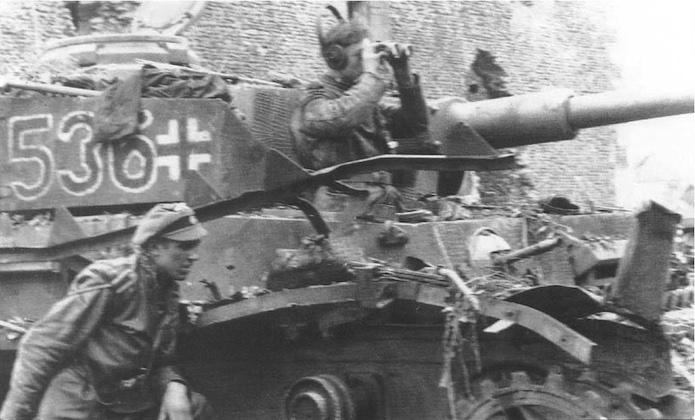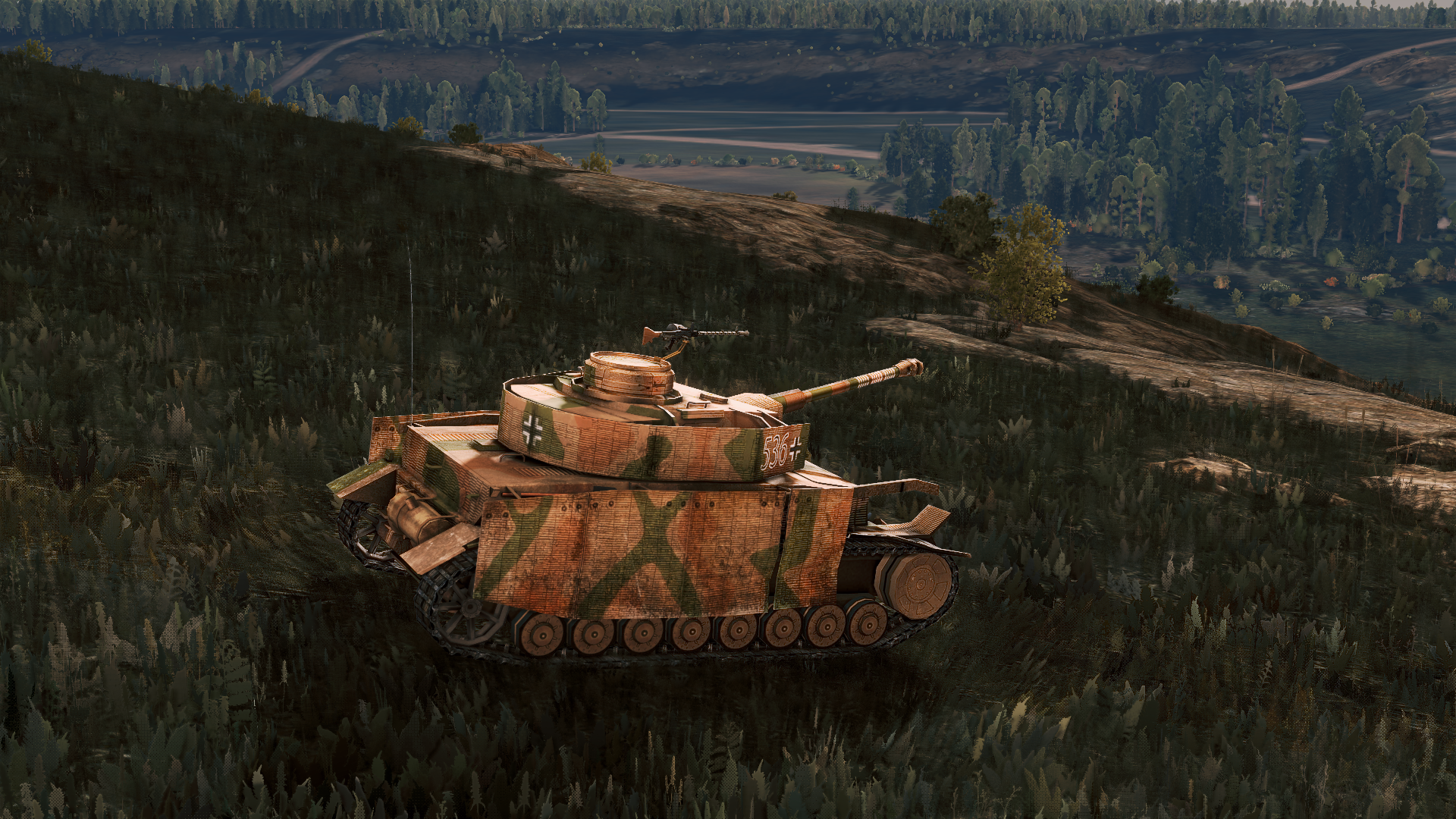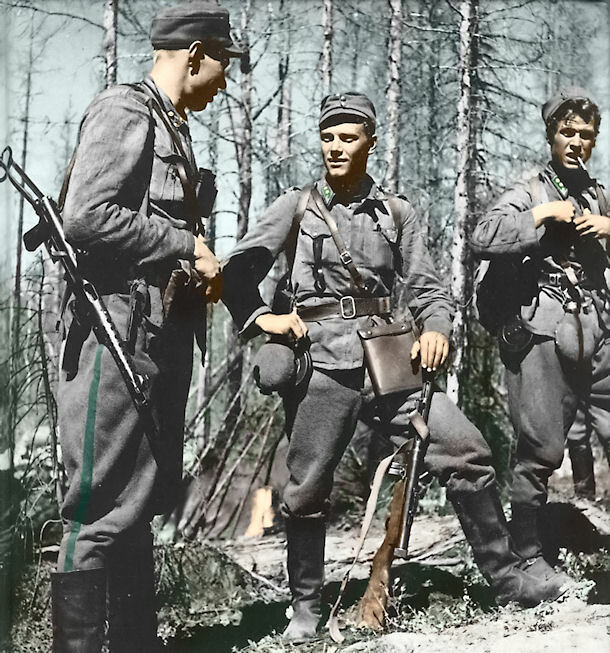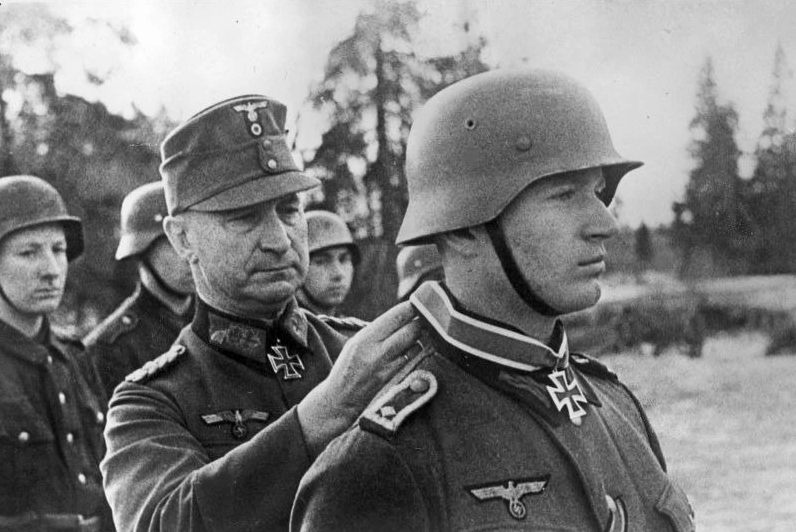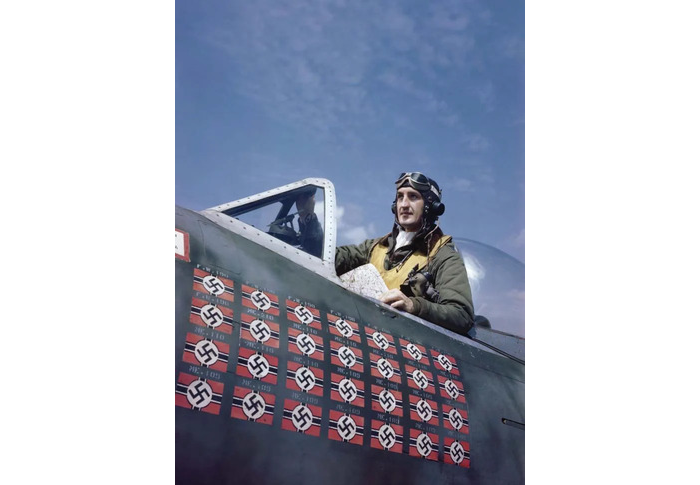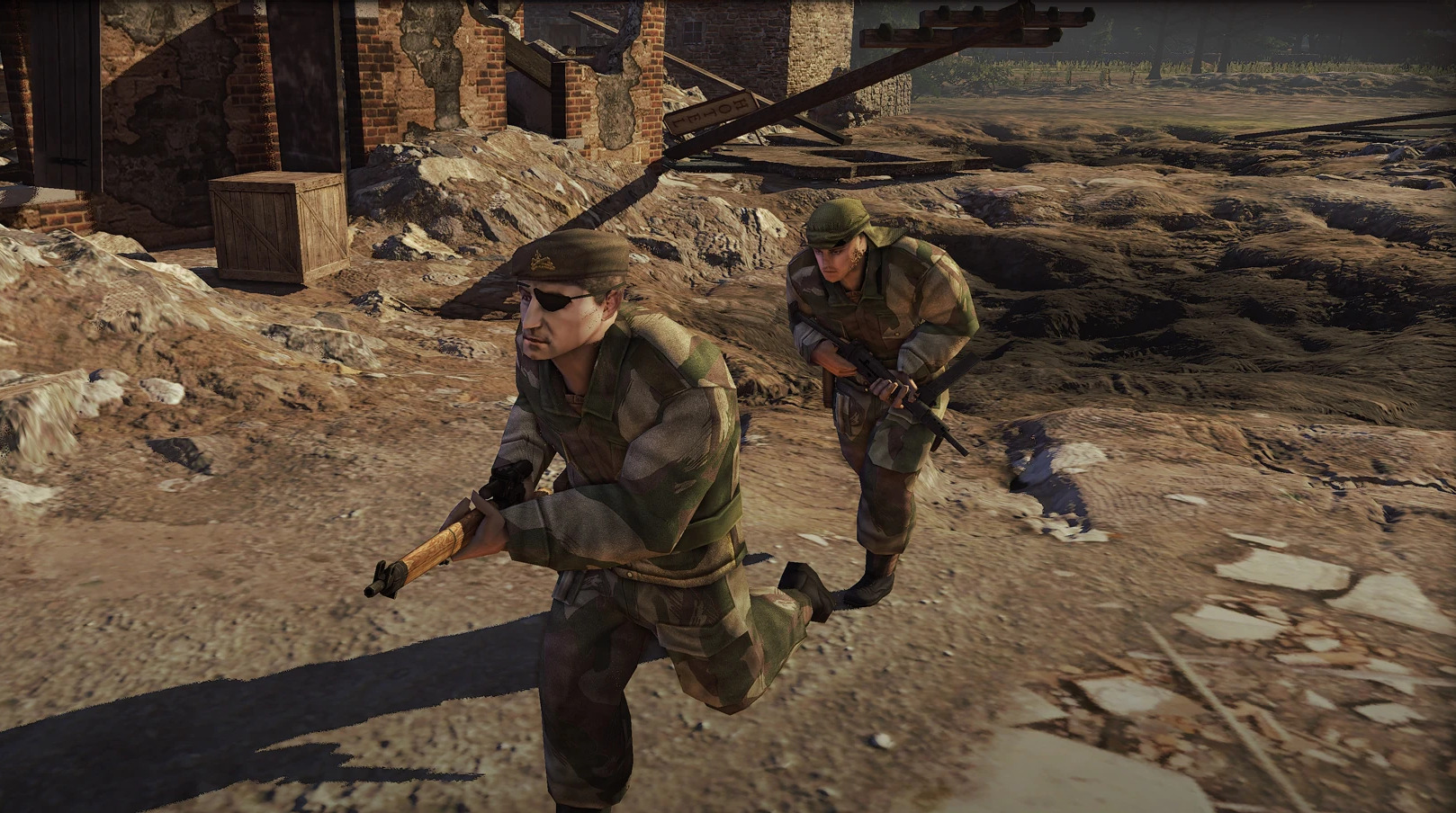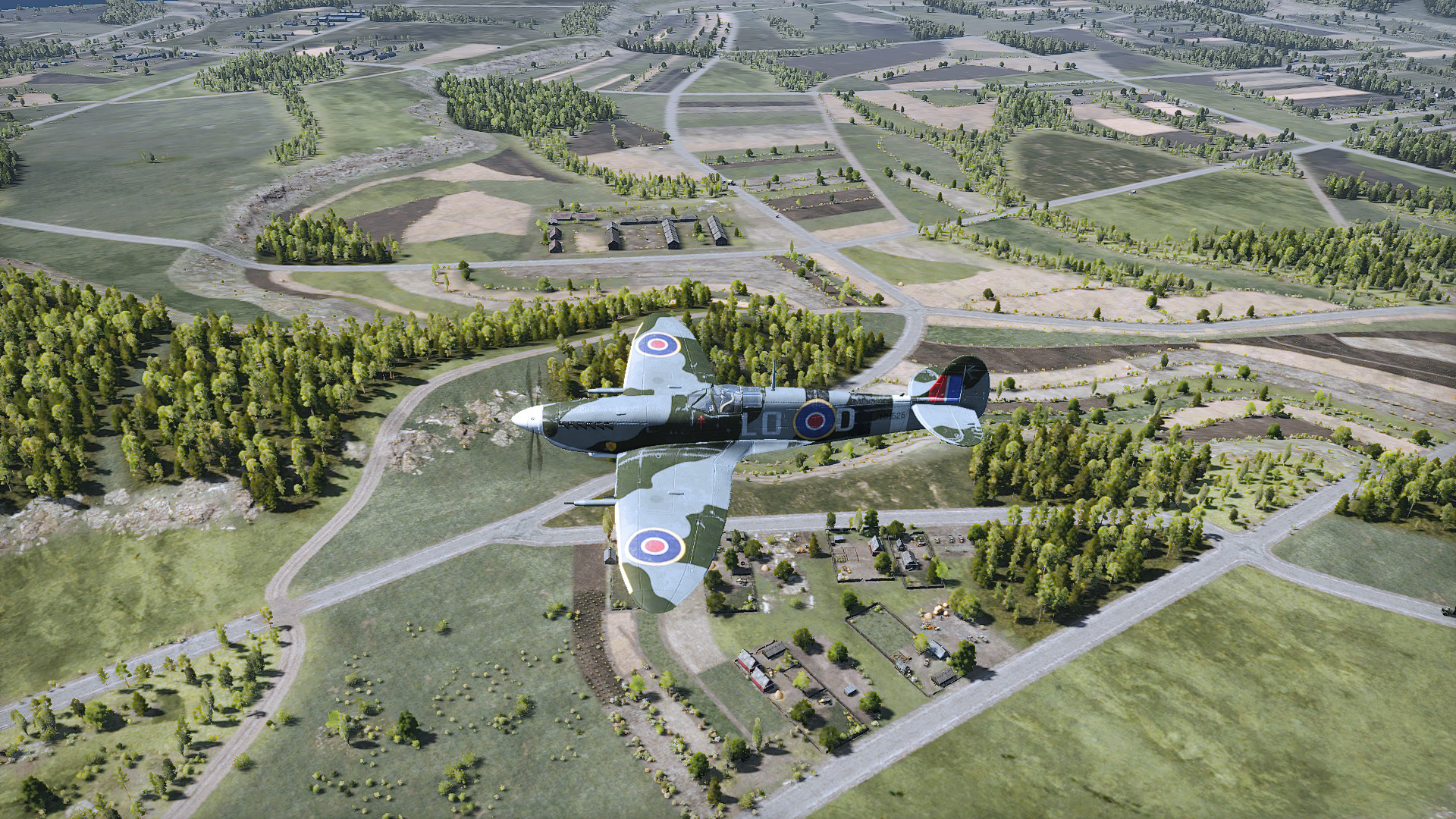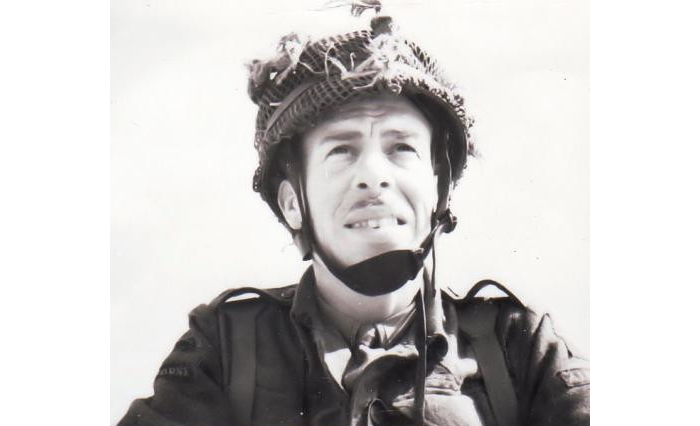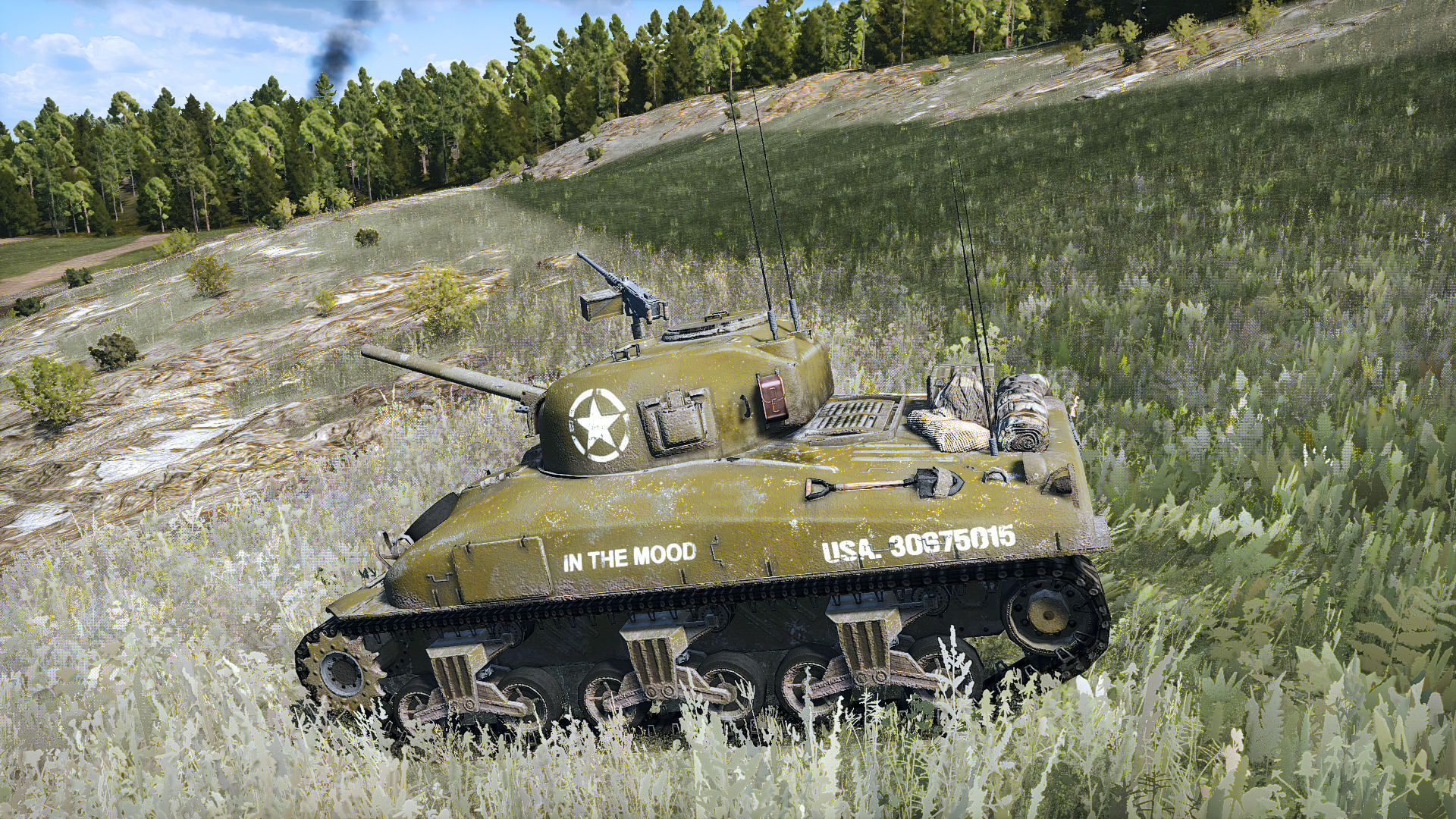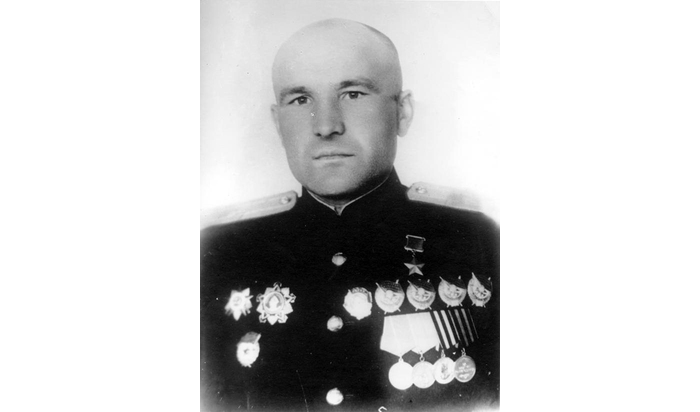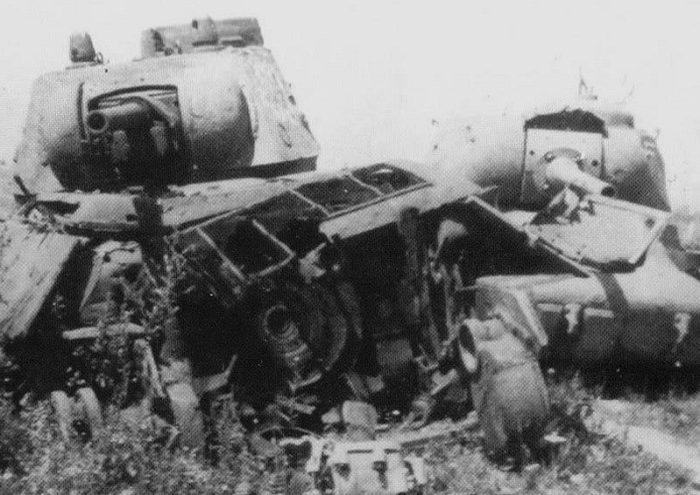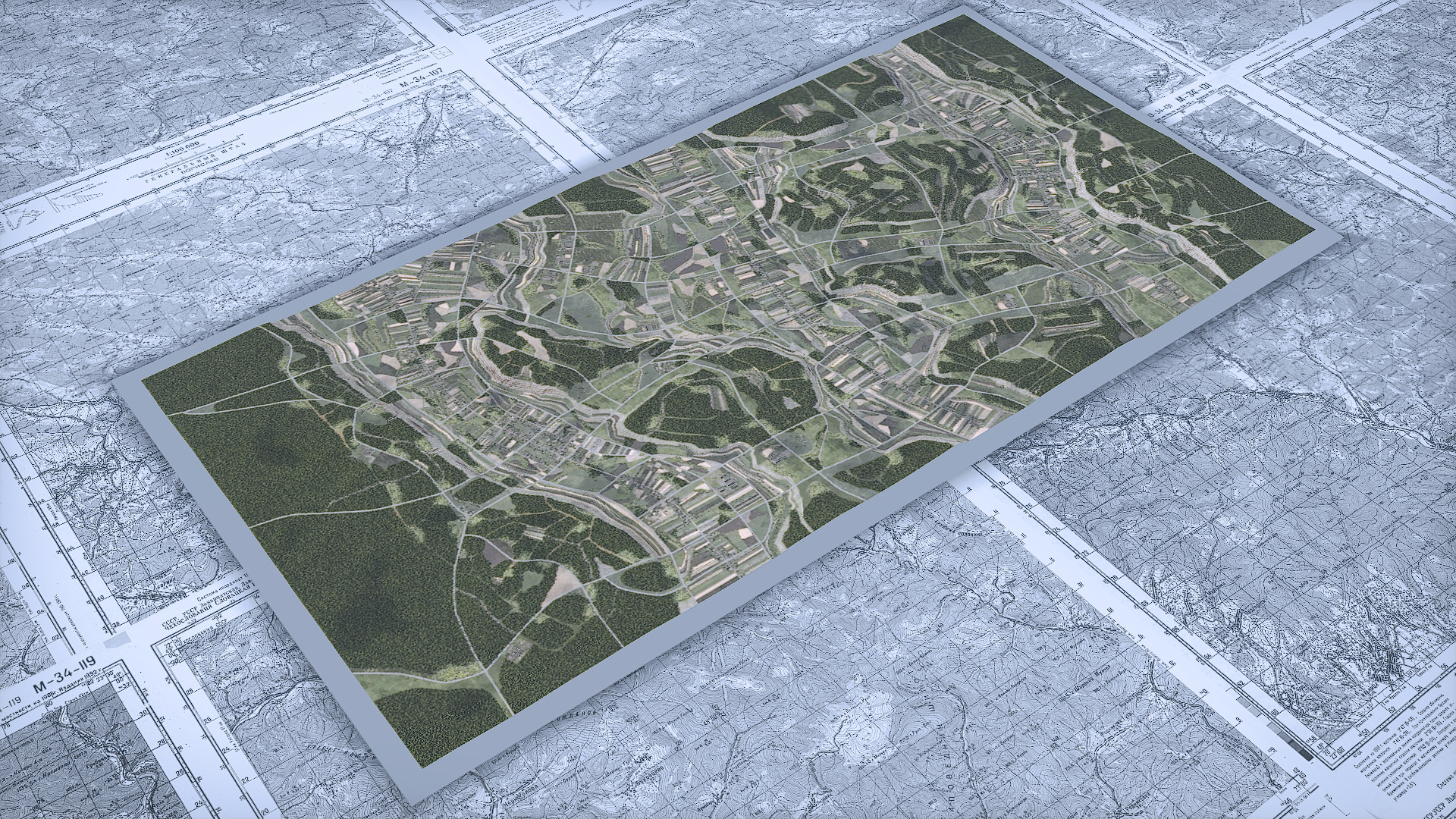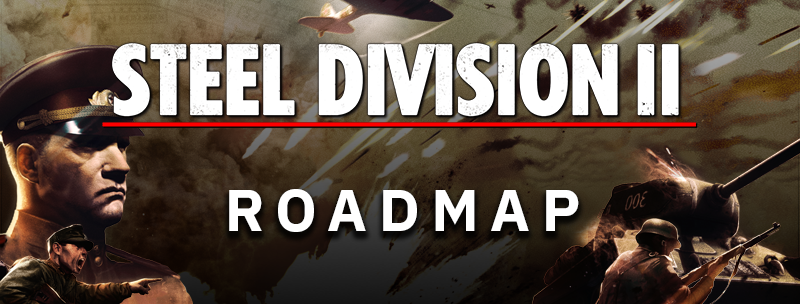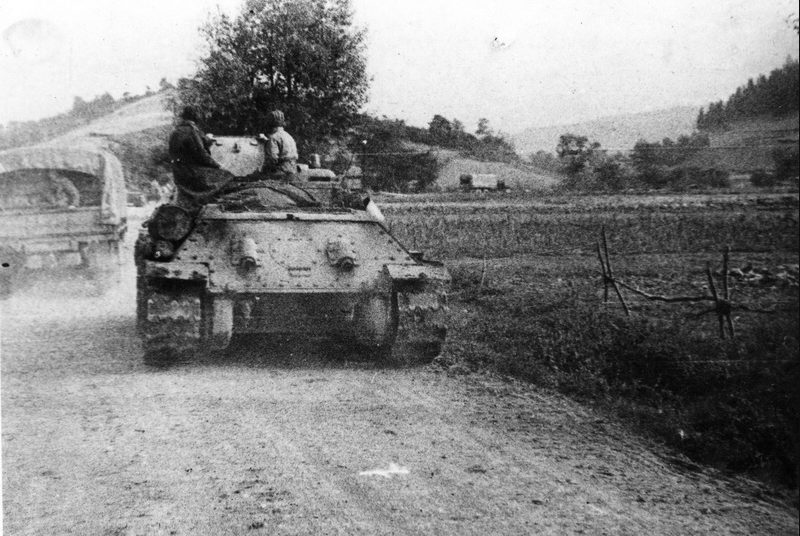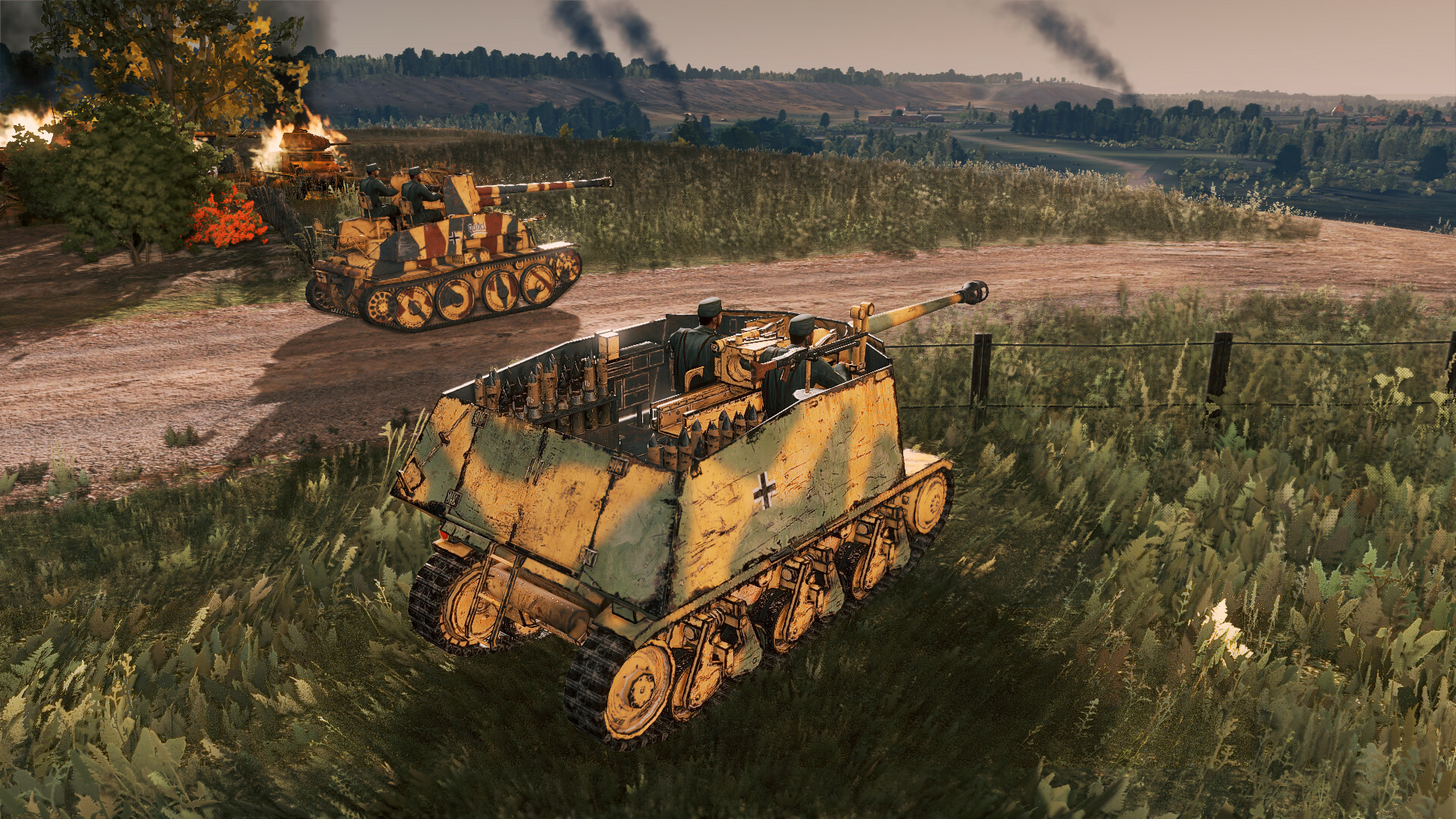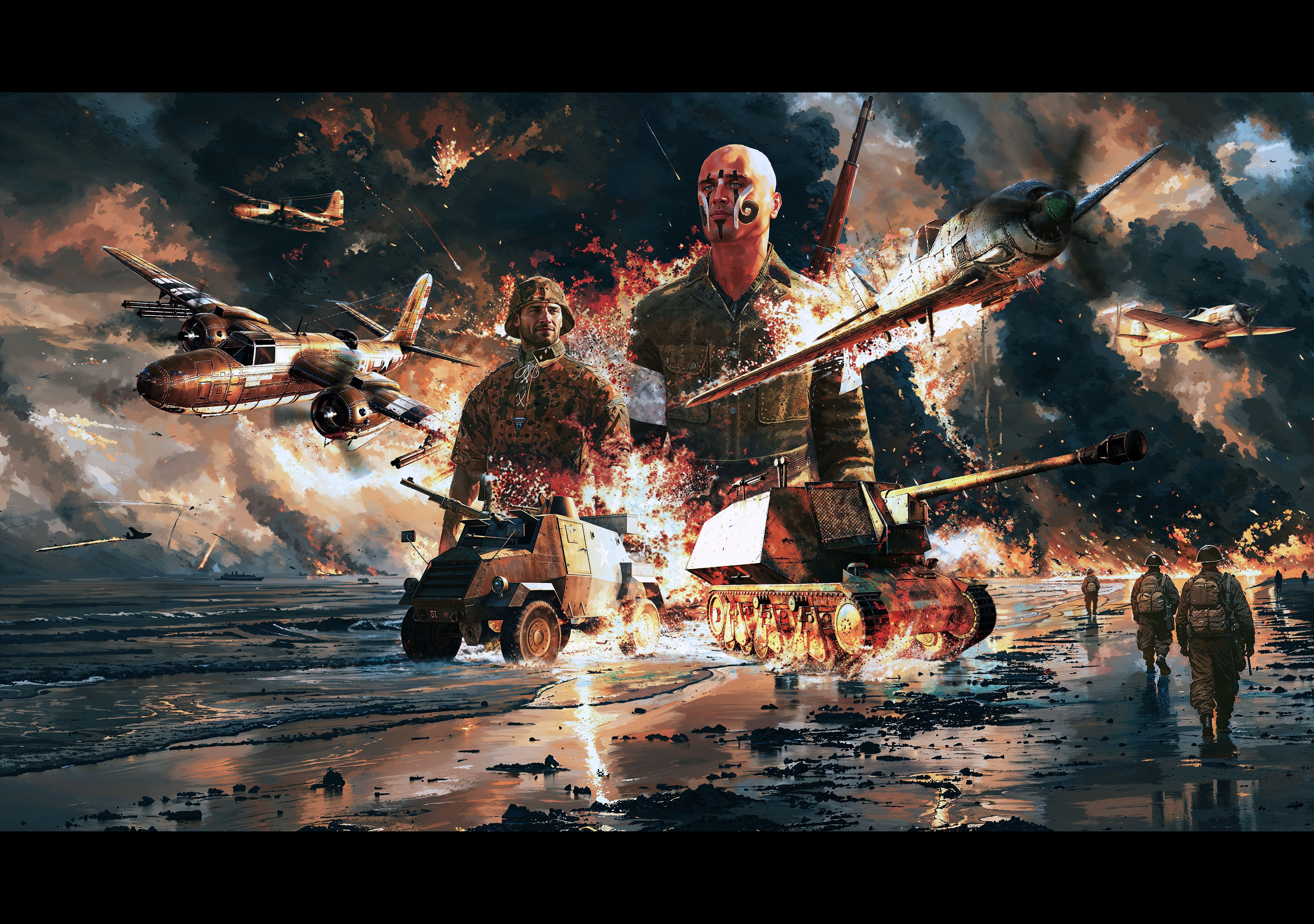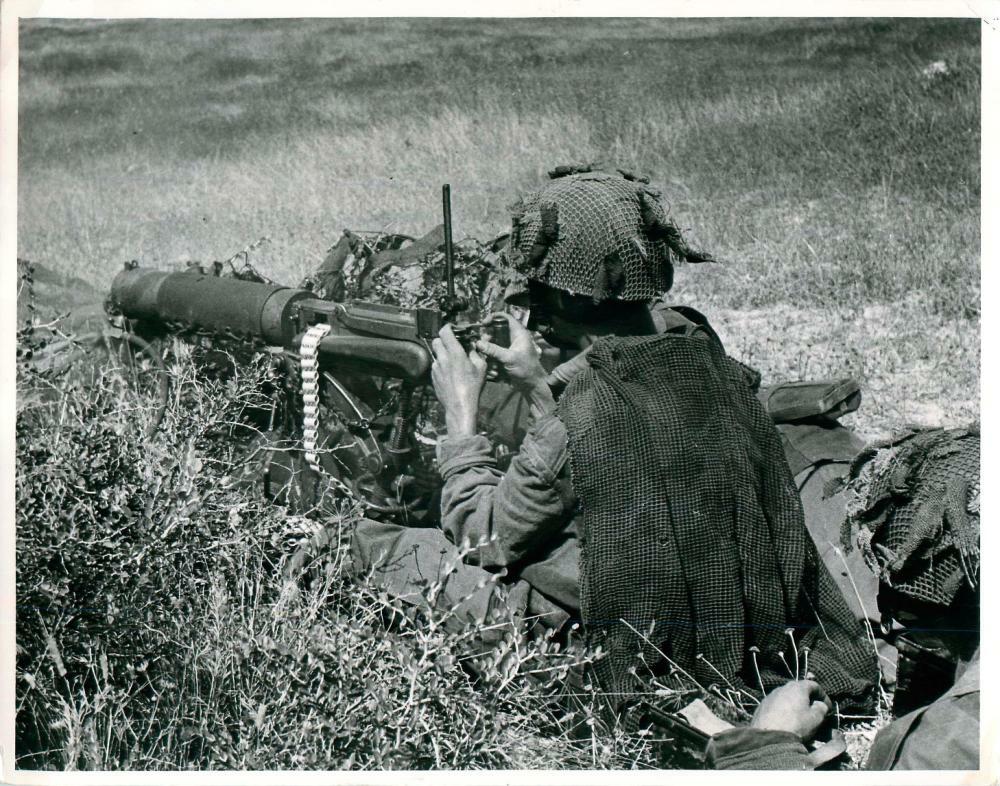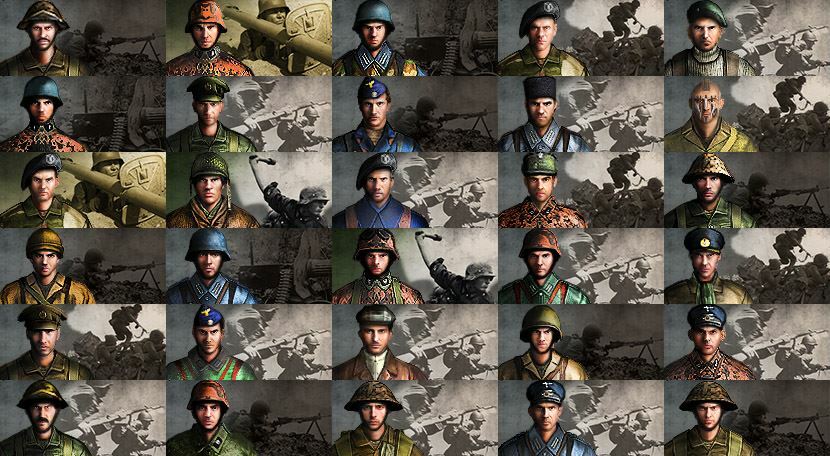
May 23, 2024
Steel Division 2 - [EUG] Gal Marcel Bigeard
Hello commanders!
We are back with an exciting new Nemesis vote! That’s right, the Steel Division 2’s community-favorite (and favored vote) has returned. In today’s DevBlog, we’ll present the first option of Nemesis #7.
Let’s put the spotlight on the US 1st Armored Division “Old Ironsides” and the German 71. Infanterie-Division. While the Axis and Allied divisions didn’t directly oppose one another, they were both stationed along the Italian Gothic Line in the late summer of 1944.
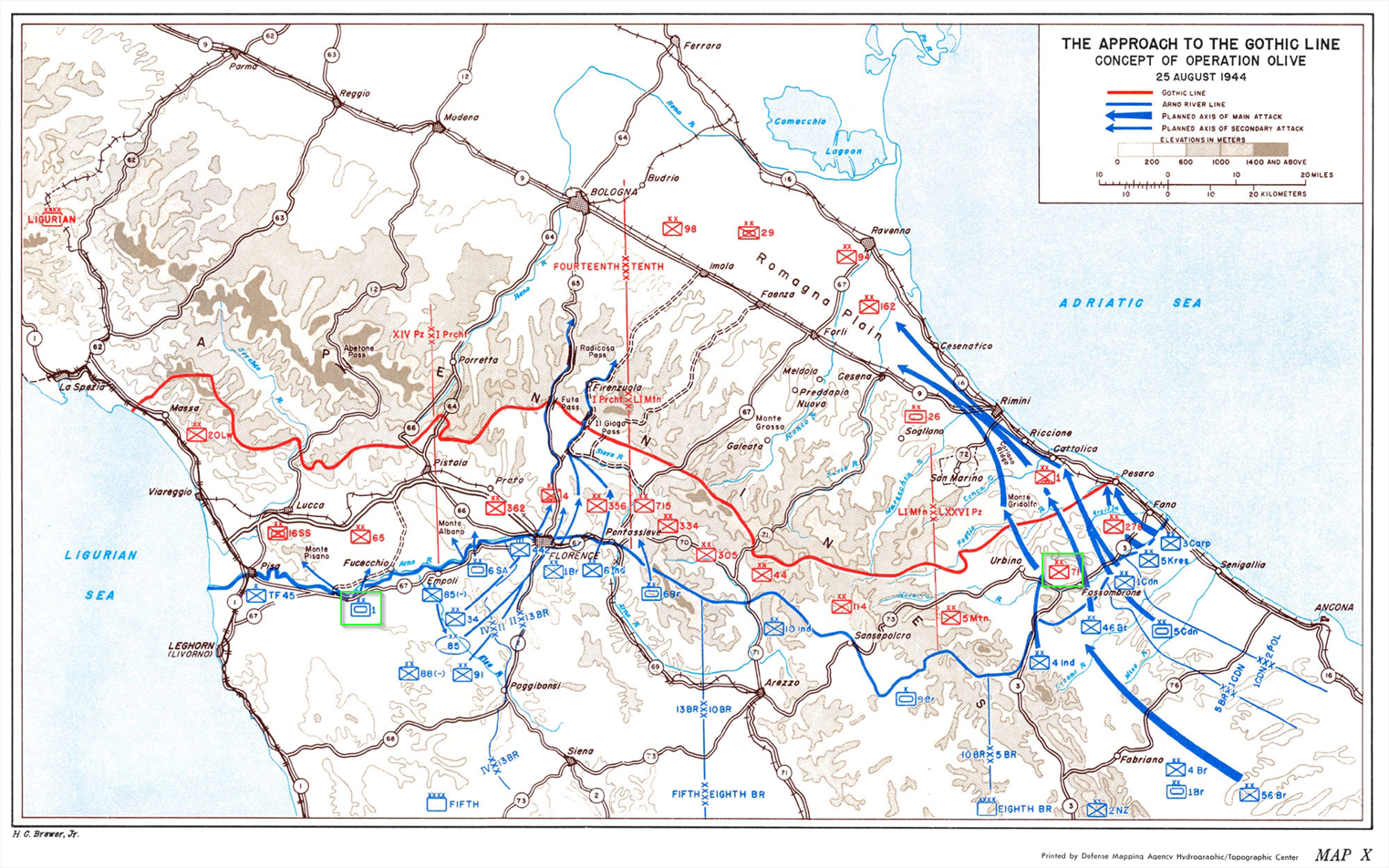
Let’s go!
The Nemesis DLC is back. What does that mean? In the coming weeks, we’ll be detailing two new battlegroups, one from the Axis and one from the Allied side. They are typically thematically or historically linked, often based on a special or unsung battle of World War II.
Once we have finished previewing each set of options, we will open the vote, and you can decide which Nemesis DLC should be developed next. Then, the Eugen team will start crafting and tinkering in our workshop (which might take some time). In the last couple of years, we have already released six other Nemesis DLCs, from Lvov Offensive, Nemesis: Storming Toulon to Nemesis: Siege of Dunkirk.
In short, we present one option for two divisions each week. After three Nemesis previews, you get one vote to choose your preferred option.
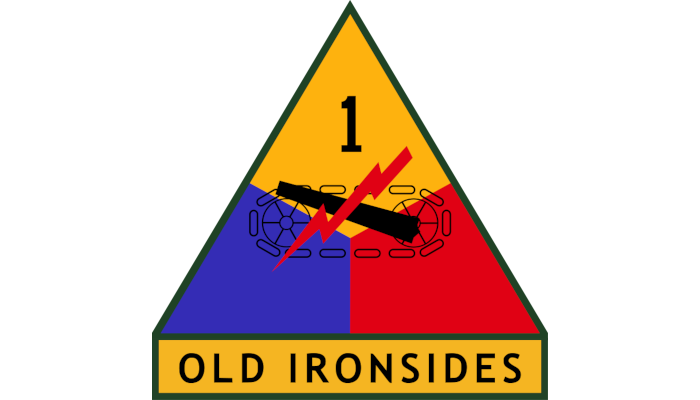
The “first-born” of American armored divisions, the US 1st Armored Division “Old Ironsides” was created in 1940 by expanding the 7th Cavalry Brigade, which had been the US pre-war armored testbed. While the United States wasn’t at war, the brutal efficiency of the German panzers in Europe during the Poland invasion and later combat in the Low Countries and France wasn’t lost to the American planners.
When the US finally entered the war at the tail-end of 1941, the 1st Armored Division shipped to England for further training, fielding early war equipment such as M3 Lees, Stuart light tanks, T19 and T30 self-propelled guns.

The division’s first taste of combat occurred in November 1942 when it took part in the Allied landings in Vichy France Algeria during Operation Torch. Soon after, the first German units were encountered. One of the more inglorious war events occurred during the Battle of Kasserine Pass when Rommel’s swift counter-attacks mauled about a third of the inexperienced American division. While the blow was humiliating, the division bounced back and recovered with surprising speed, dismissing ineffective commanders and promptly reevaluating methods and equipment.
The 1st Armored Division returned for the closing week of the Tunisia campaigns before participating in the liberation of Sicily and the invasion of mainland Italy. It turned out to be the sole armored division at the Anzio landings and a subsequent battle for the bridgehead.
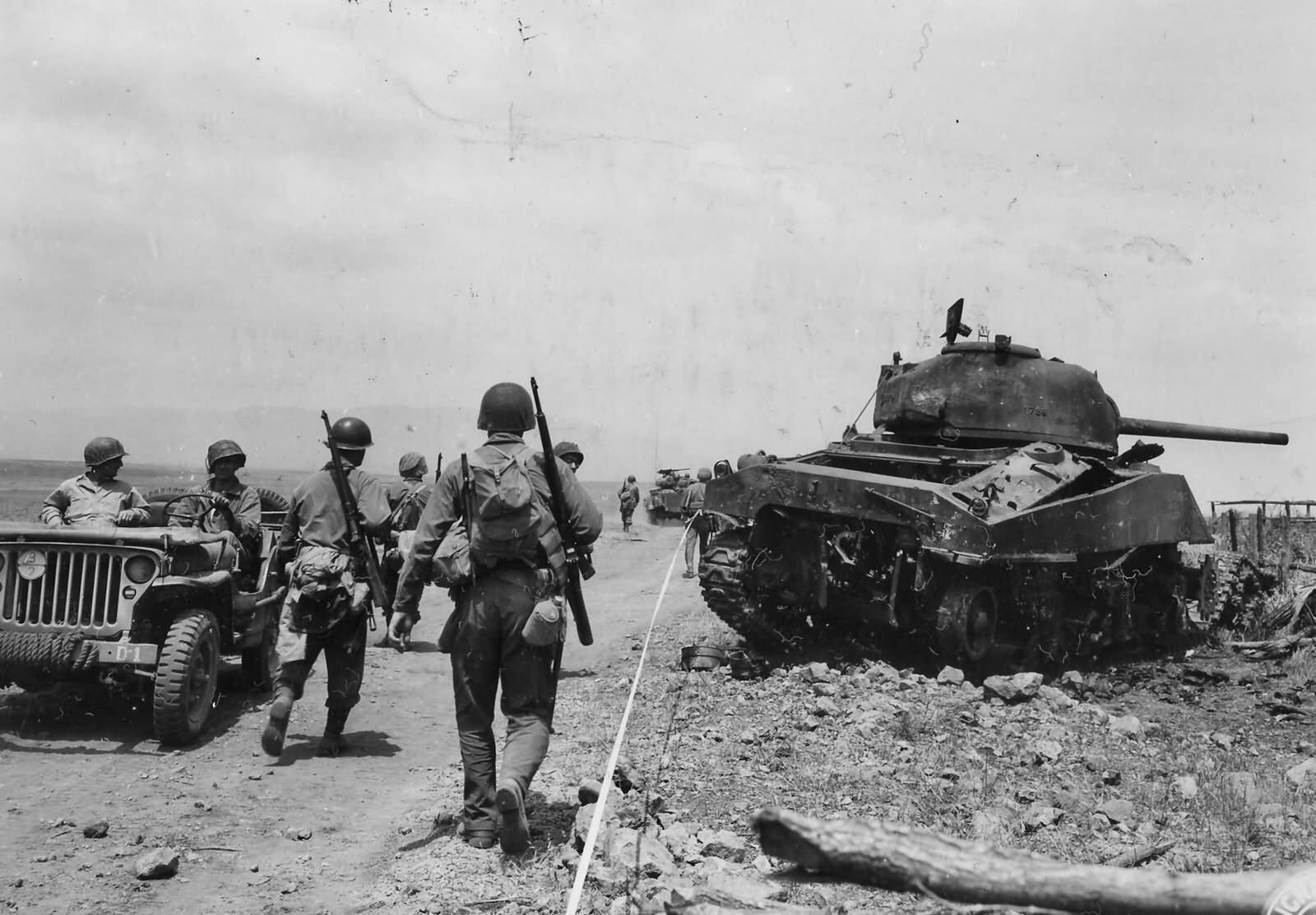
By this time in the war, new American armored divisions were reorganized under a “light” TO&E. The 1st Armored Division kept its old “heavy” TO&E (like the 2nd and 3rd Armored Division). Only after the breakout from Anzio and the capture of Rome would the formation reorganize along lighter lines, turning into a “mechanized” formation better adapted for the cramped Italian theater of war.
Upon reaching the Gothic Line in 1944, the 1st Armored Division, now a veteran formation, was reinforced with co-belligerent Italian units in an attempt to breach through the heavy German defensive lines. It finished the war on the Italian front.
A hybrid armored division, from “heavy” turned “light,” with additional Allied Italian attachments, the 1st Armored Division is more mechanized than a pure tank formation.
The Italian front featured much more constrained terrain than Northwestern Europe and was unsuited for wild, head-long cavalry rides. As such, the division’s RECO forces, while based on a “true” cavalry scout regiment, are quite average compared to, say, the 4th Armored Division. Meanwhile, INF can be deployed in more generous slots compared to other US Armored divisions, featuring even more than actual TANK slots. With stand-off firepower being a key element to subdue Axis defenses in Italy, SUPP and ART are the division’s strong suits, while AT and AIR are more average and AA particularly scarce.
The 1st Armored Division was one of the first American formations to go to war, but it never left the Mediterranean theater. By 1944, it was at the bottom of priorities regarding replacements (including equipment). This means the division is still fielding some pretty old materiel and vehicles brought over from North Africa. This kind of equipment was usually retained and subordinated to lesser units, giving them a bit more firepower.
Let’s detail each divisional category. Note that units bolded and italic are new!
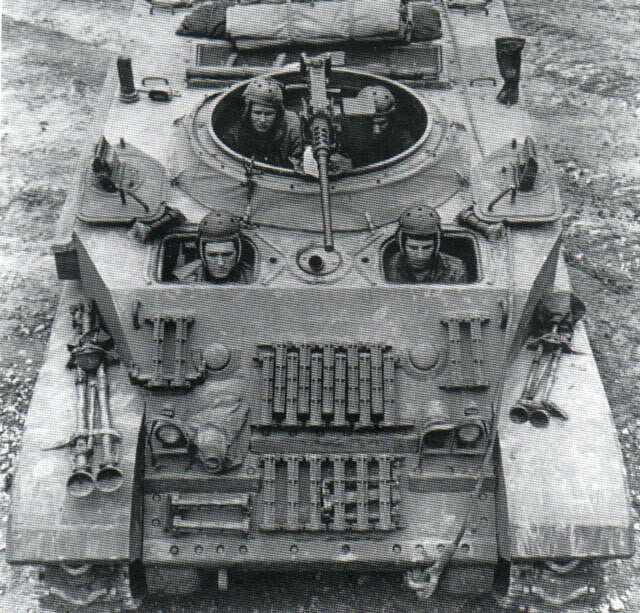
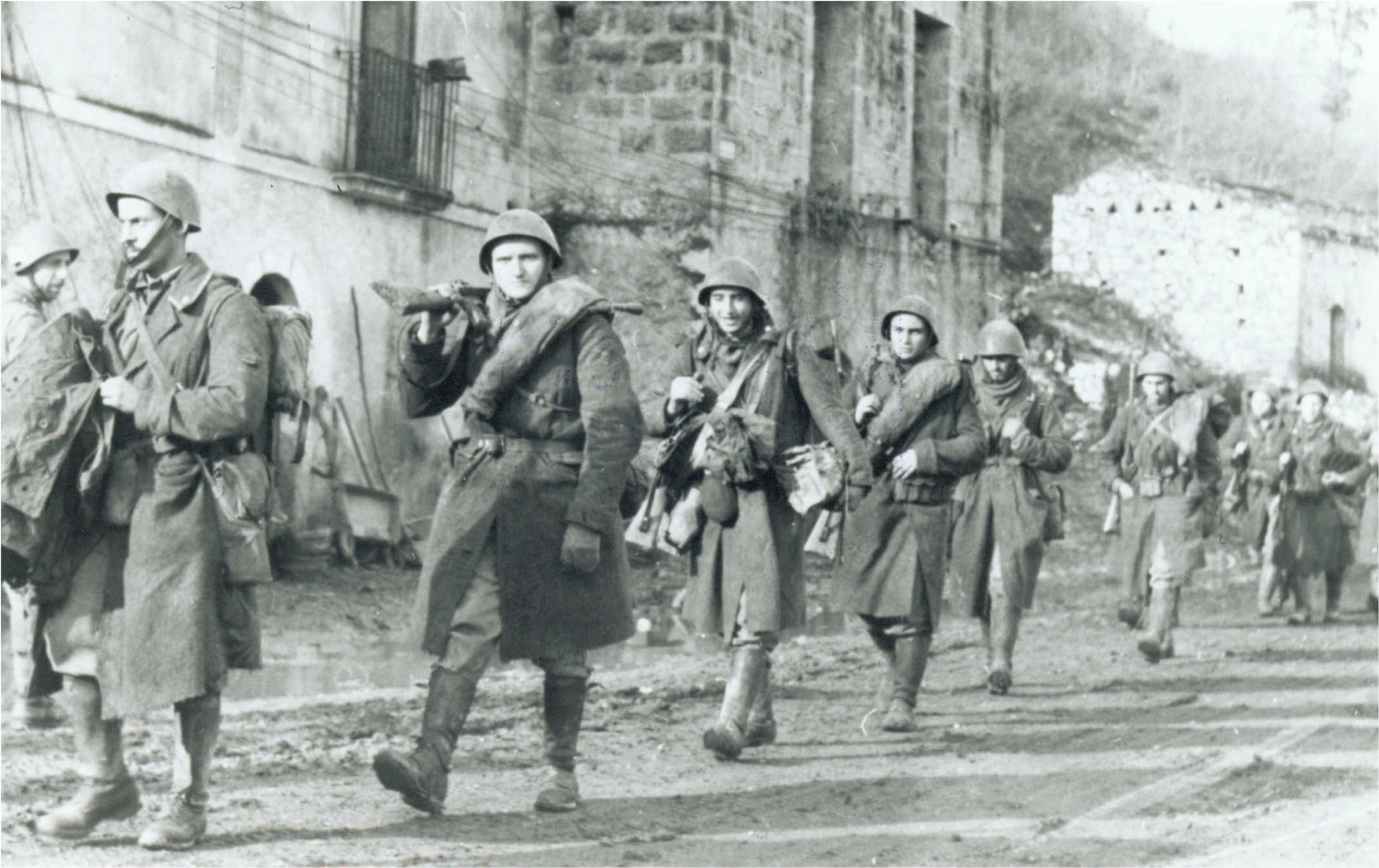
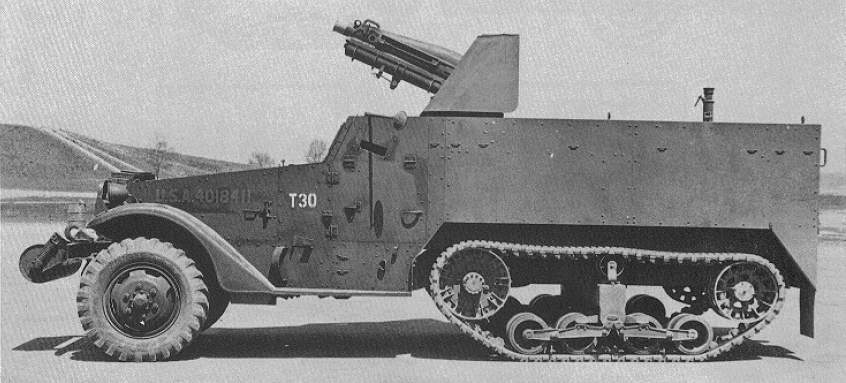
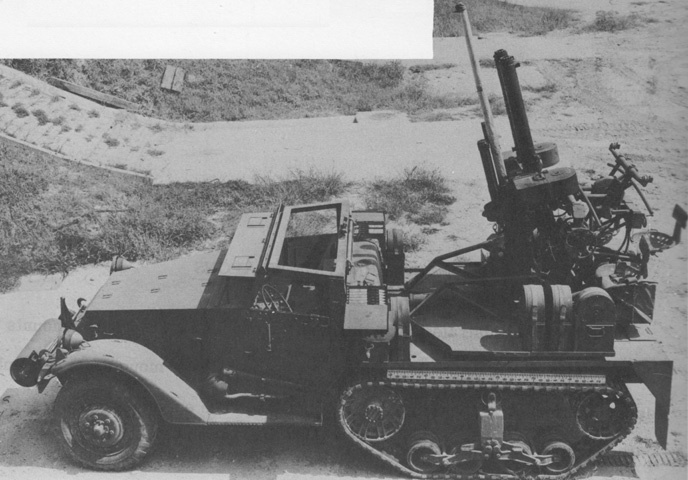
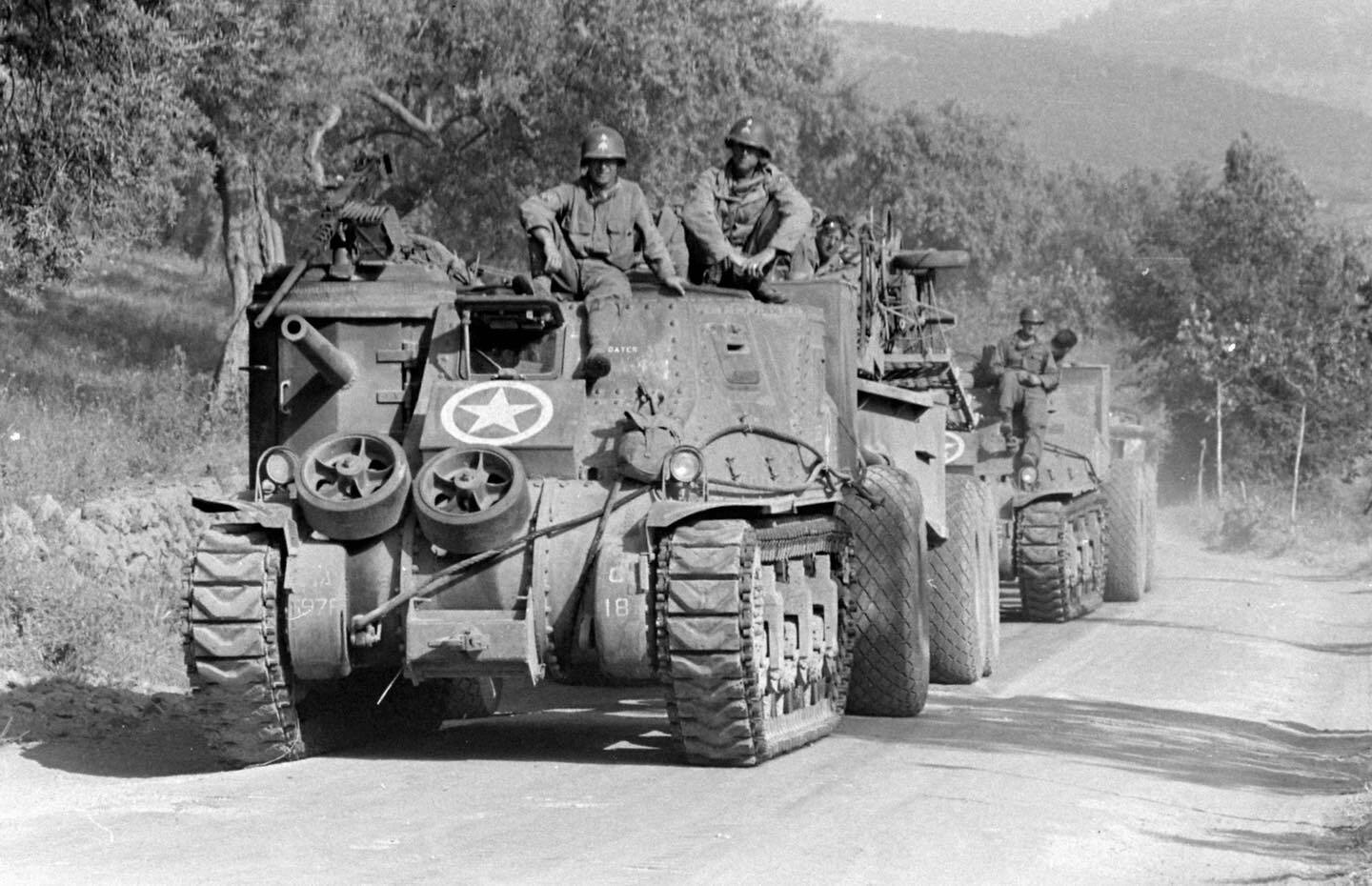
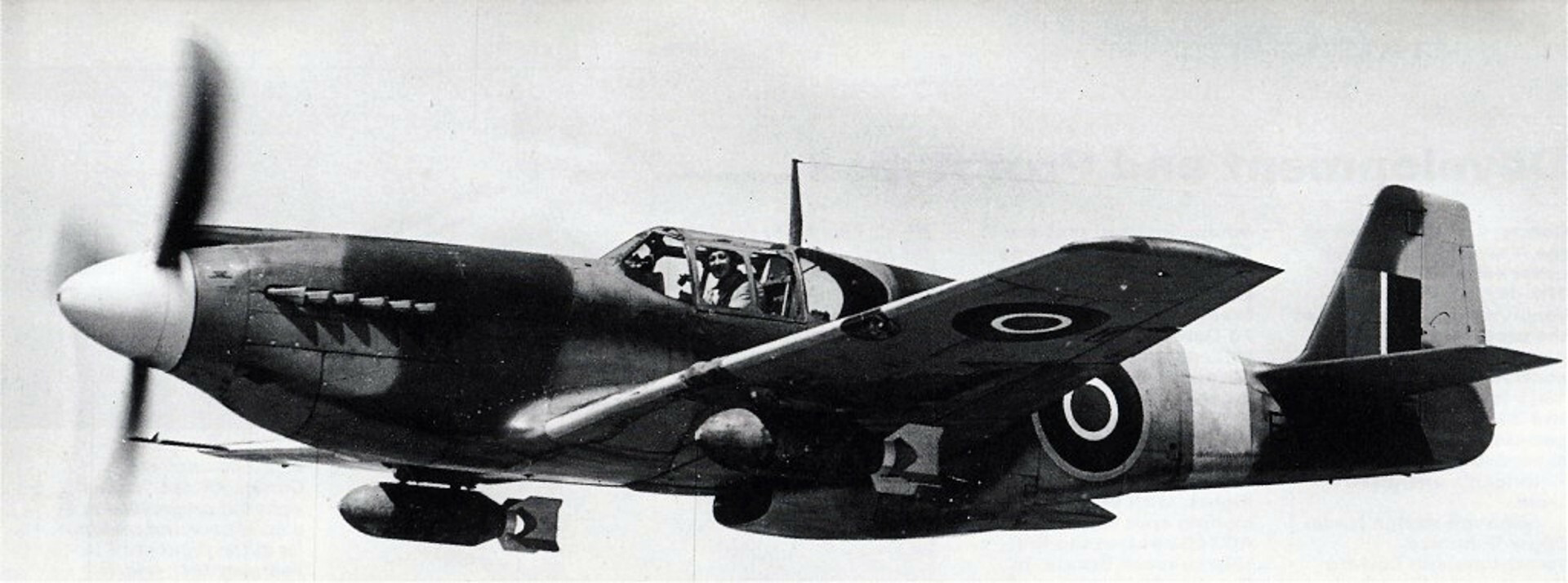

Next up is the Axis 71. Infanterie-Division. The original formation saw the light in 1939 and took part in the invasion of France in 1940, where it made propaganda headlines by capturing Verdun, the symbol of World War I. Dubbed “The Lucky One” after that, the division returned to Germany to act as a training unit before being sent east to participate in the invasion of the Soviet Union. There it took part in major battles such as the Battle of Kiev in 1941, the Second Battle of Kharkov in 1942, before fate took it to Stalingrad. Here, the 71. Infanterie-Division was destroyed, ceasing to exist in January 1943.
The division gained a second lease on life with replacement troops, and this time, it was not sent to the Eastern Front but to sunny Italy. Barely six months after the division’s reformation and still in training, the capitulation of the Axis-Italian government saw the formation hurriedly sent to Italy to disarm Italian forces. The division would spend most of its time on this front. The 71. Infanterie-Division was tasked with coastal protection and anti-partisan duties before being deployed on the frontline, where it played a major role during the Battle for Monte Cassino in the spring of 1944.
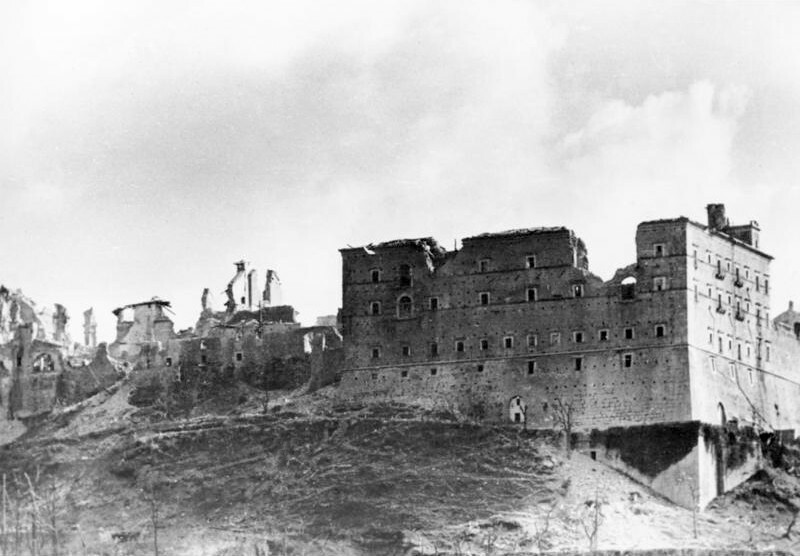
Severely depleted during the various Allied offensives, the division was moved to a quieter sector, impassable terrain. Here, instead of rest and recuperation, the 71. Infanterie-Division was targeted by an offensive of the light-footed French Expeditionary Corps’ mountains troops, severely mauling the German formation. As such, the infantry division was moved to the other side of the Italian theatre, to the Adriatic coast, assigned to hold the left flank of the Gothic line. Fighting Canadians, then Poles, then co-belligerent Italians, the division was slowly bled dry.
The 71. Infanterie-Division would not see the war's end in Italy. Transferred to Hungary to take part in the ill-fated Lake Balaton offensive, it retreated to the west afterward, reaching Austria to surrender to the British in May 1945.
The 71. Infanterie-Division was chosen as one of the original testbed divisions for the StG 44 assault rifle in 1943, though it doesn’t appear to have been very high on the infantry weapon’s replacement list after that. For instance, it retained the GrB.39 anti-tank rifle turned into AT grenade-launcher well into 1944. The formation also confiscated a lot of Italian weaponry from SMGs and LMGs, and a large percentage of the division’s artillery and armor. Another defining feature was the strangely high number of scoped rifles, which was more in line with the German Army’s mountain division arsenal.
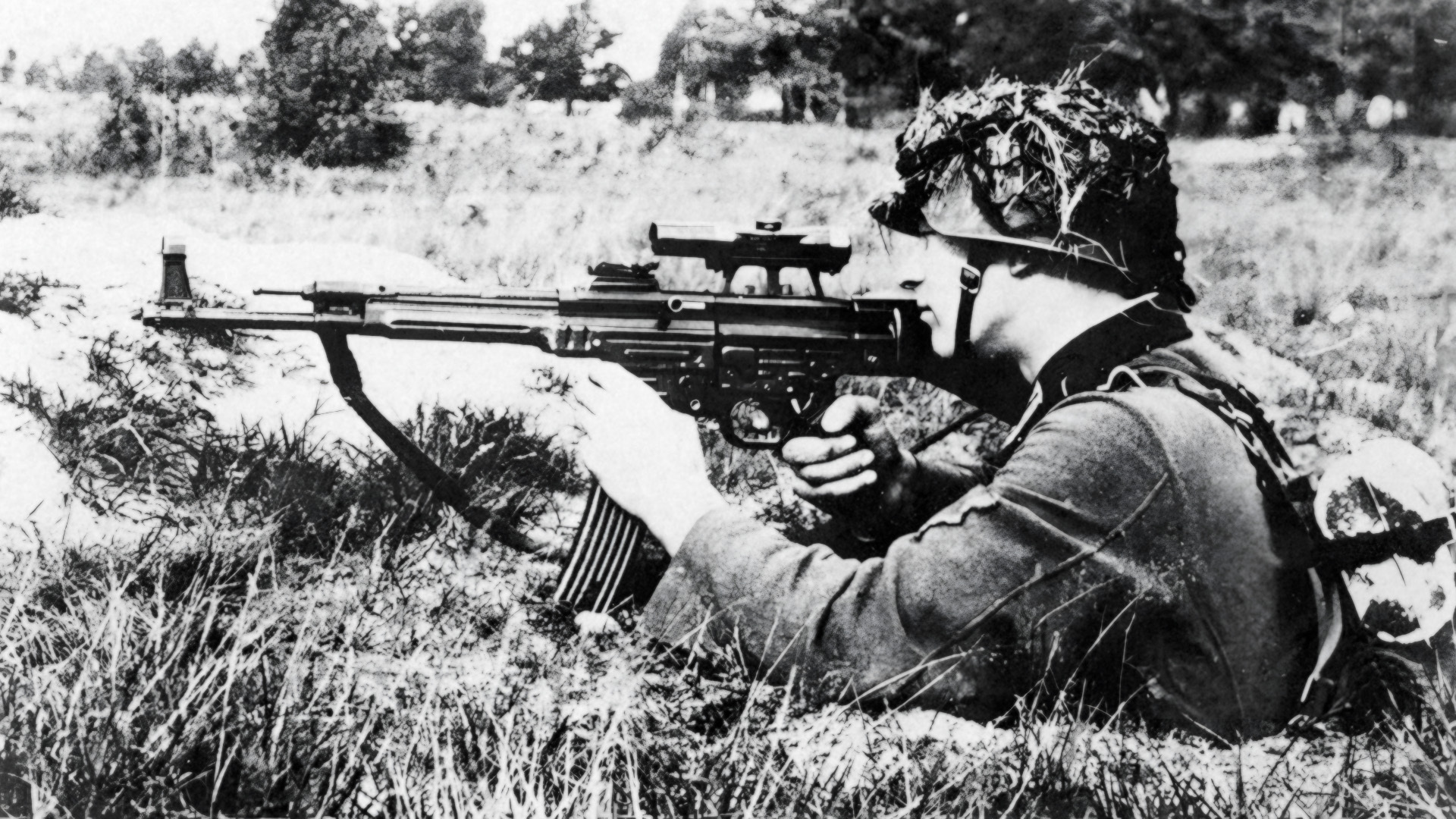
In Steel Division 2, the division receives some additional infantry from Axis RSI “Blackshirt” formations. Earlier in the war, these were fascist volunteers organized in paramilitary units attached to regular army formations. They would compensate for their lack of experience with political fanaticism. After Italy’s Armistice, most remaining Blackshirt units were of low quality, with a few Blackshirt “M” battalions (for either “Mussolini” or Muerte, meaning death, with the debate still ongoing) being of better caliber, at least in terms of political zeal. These were found to be fighting on anti-partisan duty behind the frontline, or coastal defense, in 71. Infanterie-Division’s area of operations.
The 71. Infanterie-Division is an infantry division with strong artillery, and even if total tank numbers might be lacking, some potent armor options are available.
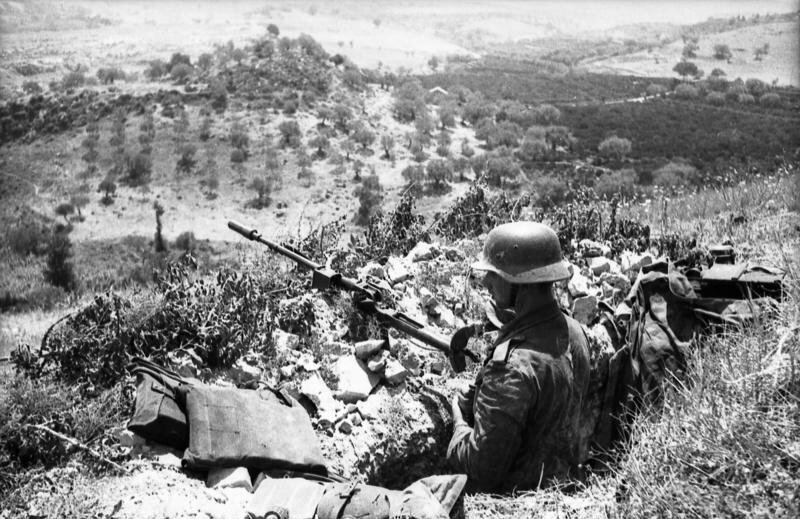
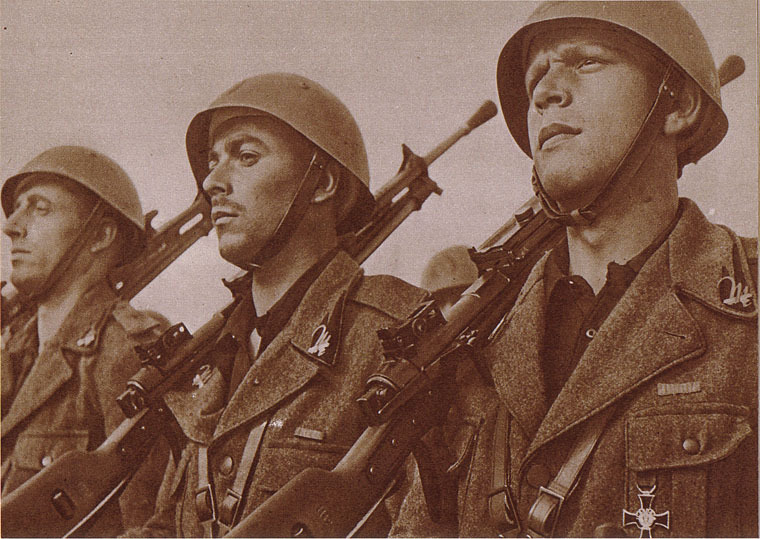
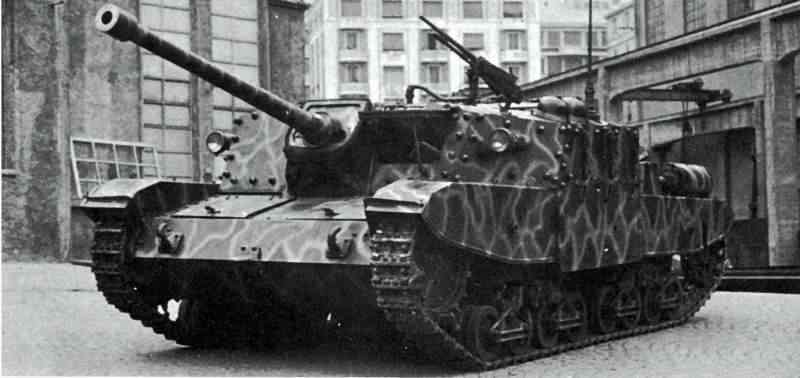
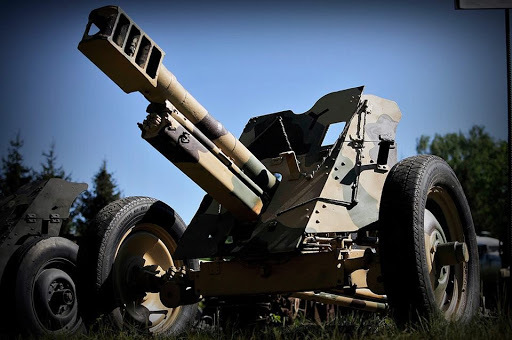
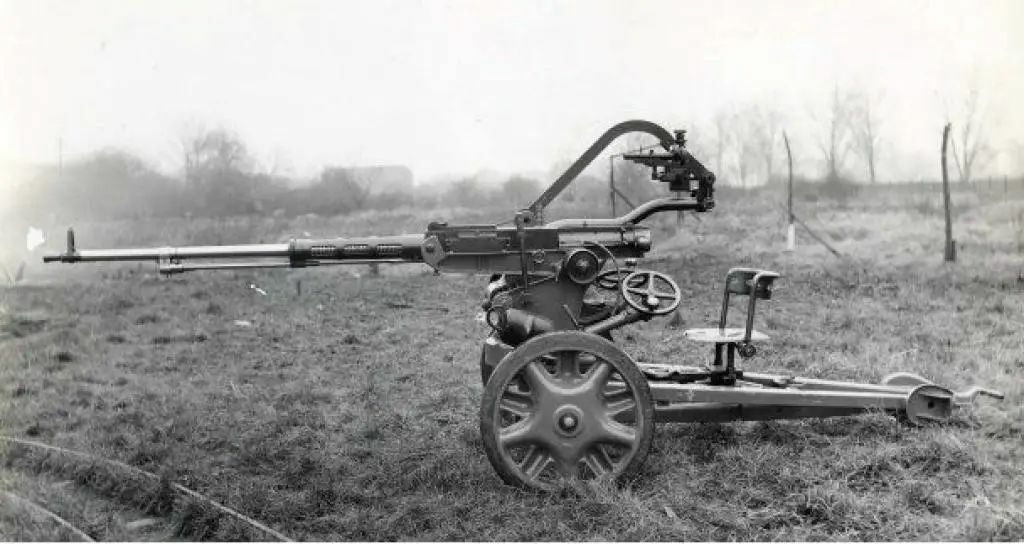
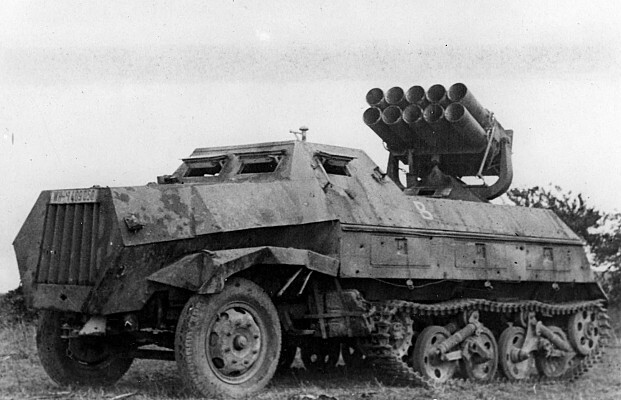
That’s all for this week’s Nemesis #7.1 preview. We’ll be back with more next week!
Join the Steel Division 2 community on our Steam forums. The latest Steel Division 2 news can also be encountered on our Instagram.
Looking for an online game? Visit the Discord server or Reddit page and get involved with the lively Steel Division 2 community!
See you on the battlefield.
We are back with an exciting new Nemesis vote! That’s right, the Steel Division 2’s community-favorite (and favored vote) has returned. In today’s DevBlog, we’ll present the first option of Nemesis #7.
Let’s put the spotlight on the US 1st Armored Division “Old Ironsides” and the German 71. Infanterie-Division. While the Axis and Allied divisions didn’t directly oppose one another, they were both stationed along the Italian Gothic Line in the late summer of 1944.

Let’s go!
Nemesis DLC Vote
The Nemesis DLC is back. What does that mean? In the coming weeks, we’ll be detailing two new battlegroups, one from the Axis and one from the Allied side. They are typically thematically or historically linked, often based on a special or unsung battle of World War II.
Once we have finished previewing each set of options, we will open the vote, and you can decide which Nemesis DLC should be developed next. Then, the Eugen team will start crafting and tinkering in our workshop (which might take some time). In the last couple of years, we have already released six other Nemesis DLCs, from Lvov Offensive, Nemesis: Storming Toulon to Nemesis: Siege of Dunkirk.
In short, we present one option for two divisions each week. After three Nemesis previews, you get one vote to choose your preferred option.
US 1st Armored Division “Old Ironsides”

The “first-born” of American armored divisions, the US 1st Armored Division “Old Ironsides” was created in 1940 by expanding the 7th Cavalry Brigade, which had been the US pre-war armored testbed. While the United States wasn’t at war, the brutal efficiency of the German panzers in Europe during the Poland invasion and later combat in the Low Countries and France wasn’t lost to the American planners.
When the US finally entered the war at the tail-end of 1941, the 1st Armored Division shipped to England for further training, fielding early war equipment such as M3 Lees, Stuart light tanks, T19 and T30 self-propelled guns.

The division’s first taste of combat occurred in November 1942 when it took part in the Allied landings in Vichy France Algeria during Operation Torch. Soon after, the first German units were encountered. One of the more inglorious war events occurred during the Battle of Kasserine Pass when Rommel’s swift counter-attacks mauled about a third of the inexperienced American division. While the blow was humiliating, the division bounced back and recovered with surprising speed, dismissing ineffective commanders and promptly reevaluating methods and equipment.
The 1st Armored Division returned for the closing week of the Tunisia campaigns before participating in the liberation of Sicily and the invasion of mainland Italy. It turned out to be the sole armored division at the Anzio landings and a subsequent battle for the bridgehead.

By this time in the war, new American armored divisions were reorganized under a “light” TO&E. The 1st Armored Division kept its old “heavy” TO&E (like the 2nd and 3rd Armored Division). Only after the breakout from Anzio and the capture of Rome would the formation reorganize along lighter lines, turning into a “mechanized” formation better adapted for the cramped Italian theater of war.
Upon reaching the Gothic Line in 1944, the 1st Armored Division, now a veteran formation, was reinforced with co-belligerent Italian units in an attempt to breach through the heavy German defensive lines. It finished the war on the Italian front.
The 1st Armored Division in Steel Division 2
A hybrid armored division, from “heavy” turned “light,” with additional Allied Italian attachments, the 1st Armored Division is more mechanized than a pure tank formation.
The Italian front featured much more constrained terrain than Northwestern Europe and was unsuited for wild, head-long cavalry rides. As such, the division’s RECO forces, while based on a “true” cavalry scout regiment, are quite average compared to, say, the 4th Armored Division. Meanwhile, INF can be deployed in more generous slots compared to other US Armored divisions, featuring even more than actual TANK slots. With stand-off firepower being a key element to subdue Axis defenses in Italy, SUPP and ART are the division’s strong suits, while AT and AIR are more average and AA particularly scarce.
The 1st Armored Division was one of the first American formations to go to war, but it never left the Mediterranean theater. By 1944, it was at the bottom of priorities regarding replacements (including equipment). This means the division is still fielding some pretty old materiel and vehicles brought over from North Africa. This kind of equipment was usually retained and subordinated to lesser units, giving them a bit more firepower.
The 1st Armored Division Detailed
Let’s detail each divisional category. Note that units bolded and italic are new!
- RECO - The formation’s recon elements field “cavalry” style equipment and units. Not accounting for the usual array of vehicles (Stuart, Greyhound) it can also field CAVALRY SCOUTS, AMMO & PIONIEERS, BANTAM jeeps, M6 FARGO, as well as a few attached Italian ESPLORATORI. Unlike other American units, and more in line with their Commonwealth counterparts, the 1st Armored Division scouts have jalopied Stuart light tanks for recon. These were not the battlefield-modified Stuart Recce, but rather a specially designed T8E1. These new units are more mobile but are not meant to transport scouts. They are best used as a light recon tank.

- INF - Slogging it out since North Africa and overused in the mountainous Italian terrain, the grunt of the 1st Armored Division suffers from the same battle weariness as the British 7th Armoured Division. This means that new variants of ARM. RIFLES (BAR) and ARM. RIFLES (LMG) will get a free veterancy, but this comes with the Battle Weary trait. They are also locked to half-tracks as a transport option. Lighter infantry squads come in the option of two Italian attachments, both from the co-belligerent 210a Divisione di Fanteria Ausiliaria:
- The 67º Reggimento Fanteria forms the basis for the new FUCCILIERI (“vanilla,” Bren and Leader variants) reequipped with British small arms. Briefly attached to this formation were the BERSAGLIERI A.U.C. (Allievi Ufficiali di Complemento) squads, also a new unit, which were officer cadet battalions. All the fit and healthy personnel had been transferred elsewhere, leaving only the crooked shell of demoralized, unhealthy recruits who, in real life, had a staggering rate of desertion and hospital admittance. As such, this latter squad will feature the Disheartened trait.
- The 210º Raggruppamento Genio da combattimento provide GUASTATORI squads, including flamethrower-armed variants.
- The 67º Reggimento Fanteria forms the basis for the new FUCCILIERI (“vanilla,” Bren and Leader variants) reequipped with British small arms. Briefly attached to this formation were the BERSAGLIERI A.U.C. (Allievi Ufficiali di Complemento) squads, also a new unit, which were officer cadet battalions. All the fit and healthy personnel had been transferred elsewhere, leaving only the crooked shell of demoralized, unhealthy recruits who, in real life, had a staggering rate of desertion and hospital admittance. As such, this latter squad will feature the Disheartened trait.

- TANK - This category covers M5A1 light tanks and pretty much all types of Sherman tanks, as the 1st Armored Division quickly replaced its M3 Lees with the 75mm M4 and later the M4A1. The M4A3 was reserved for the Northwestern European theatre and was unavailable to the battlegroup. However, in a peculiar move, the division received one of the first batches of M4A3(76)W tanks as replacements later in 1944. This new unit, including the command variant, will be phase-locked.
- SUPP - This is well equipped with the usual set of units, from HMGs to supply commanders, flamethrowers, and the like. Representing the division’s heavy reliance on direct fire support, the M8 SCOTT, T30 HMC, M4(75) and even a M7 PRIEST are used in an assault gun role. Some Italian units are also featured, including the new CARABINERI military police, BREDA M37 HMG and OBICE 65/13 plus a rapid-firing anti-tank rifle, the new S18/1000. This latter unit will be treated as a 20mm HMG, on par with the German Erdkampflafette 43.

- AT - As mentioned, the divisional’s anti-tank forces are pretty light. It contains the usual BAZOOKA weapon teams, towed M1 57mm and M1 76mm AT guns, a few M10 TANK DESTROYERS as well as Italian CANNONE 47/32.
- AA - Again, with the Axis air threat being pretty non-existent by the time the Allies reached the Gothic line, the battlegroup’s anti-air forces have been reduced to a bare minimum. Units available include the usual M16 MGMC and, more unusual, a new unit, the T28E1 MGMC. This is a predecessor to the M15, which is armed the same but features less armor.

- ART - This is one of the division’s strong points, with a wide array of light and heavy artillery units. It includes the usual 60mm, 81mm and 107mm mortars, M21 self-propelled mortar and M7 105mm howitzer. It can also count on the heavy towed M1 155m and M1 203mm howitzer. The latter unit comes with its dedicated artillery tractor, in the form of the new M33 PRIME MOVER, which is basically a repurposed de-turreted M3 Lee.

- AIR - The 1st Armored Division won’t have access to generous air forces and can only call on fighter and fighter-bombers, including two new models of Italian Re.2001CN fighters and American A-36 APACHE fighter-bombers. The latter is a dive-bomber variant of the Mustang.

German 71. Infanterie-Division

Next up is the Axis 71. Infanterie-Division. The original formation saw the light in 1939 and took part in the invasion of France in 1940, where it made propaganda headlines by capturing Verdun, the symbol of World War I. Dubbed “The Lucky One” after that, the division returned to Germany to act as a training unit before being sent east to participate in the invasion of the Soviet Union. There it took part in major battles such as the Battle of Kiev in 1941, the Second Battle of Kharkov in 1942, before fate took it to Stalingrad. Here, the 71. Infanterie-Division was destroyed, ceasing to exist in January 1943.
The division gained a second lease on life with replacement troops, and this time, it was not sent to the Eastern Front but to sunny Italy. Barely six months after the division’s reformation and still in training, the capitulation of the Axis-Italian government saw the formation hurriedly sent to Italy to disarm Italian forces. The division would spend most of its time on this front. The 71. Infanterie-Division was tasked with coastal protection and anti-partisan duties before being deployed on the frontline, where it played a major role during the Battle for Monte Cassino in the spring of 1944.

Severely depleted during the various Allied offensives, the division was moved to a quieter sector, impassable terrain. Here, instead of rest and recuperation, the 71. Infanterie-Division was targeted by an offensive of the light-footed French Expeditionary Corps’ mountains troops, severely mauling the German formation. As such, the infantry division was moved to the other side of the Italian theatre, to the Adriatic coast, assigned to hold the left flank of the Gothic line. Fighting Canadians, then Poles, then co-belligerent Italians, the division was slowly bled dry.
The 71. Infanterie-Division would not see the war's end in Italy. Transferred to Hungary to take part in the ill-fated Lake Balaton offensive, it retreated to the west afterward, reaching Austria to surrender to the British in May 1945.
German 71. Infanterie-Division in Steel Division 2
The 71. Infanterie-Division was chosen as one of the original testbed divisions for the StG 44 assault rifle in 1943, though it doesn’t appear to have been very high on the infantry weapon’s replacement list after that. For instance, it retained the GrB.39 anti-tank rifle turned into AT grenade-launcher well into 1944. The formation also confiscated a lot of Italian weaponry from SMGs and LMGs, and a large percentage of the division’s artillery and armor. Another defining feature was the strangely high number of scoped rifles, which was more in line with the German Army’s mountain division arsenal.

In Steel Division 2, the division receives some additional infantry from Axis RSI “Blackshirt” formations. Earlier in the war, these were fascist volunteers organized in paramilitary units attached to regular army formations. They would compensate for their lack of experience with political fanaticism. After Italy’s Armistice, most remaining Blackshirt units were of low quality, with a few Blackshirt “M” battalions (for either “Mussolini” or Muerte, meaning death, with the debate still ongoing) being of better caliber, at least in terms of political zeal. These were found to be fighting on anti-partisan duty behind the frontline, or coastal defense, in 71. Infanterie-Division’s area of operations.
German 71. Infanterie-Division Detailed
The 71. Infanterie-Division is an infantry division with strong artillery, and even if total tank numbers might be lacking, some potent armor options are available.
- RECO - An average category with the regular complement of AUFKLÄRER, SPÄHTRUPP, and BMW recon units. The new FUSILIER (ZF) will make good use of some of the battlegroup’s ample supply of scoped rifles. The SPW AB41(i) can also be fielded.
- INF - One of the formation’s strong points. The bulk of the infantry will be composed of the new GRENADIER (GrB 39) with MG-34 and GrB. 39 anti-tank rifle. One card of the new GRENADIER (MG-42) will receive an extra Breda 30 LMG, courtesy of disarming the local Italian forces. The new GREN. FÜH. (ZF) will bring an extra number of scoped rifles.

- More specialized squads are featured in the form of - one card each - STURMGRENADIER and STOSSTRUPPEN (Beretta).
- The new PIONIER (GrB. 39) will also feature the anti-tank rifle. Regular PIONIER FÜH. and STURMPIONIER will also be available.
- Finally, the new SQUADRISTI (Blackshirts) will deploy in two flavors: one squad equipped with a MG-42 and the other with a FM 24/29. Both units will also be armed with Panzerfaust.

- TANK - Rather restricted in numbers, several interesting tank unit choices will be featured.
- The division’s well-represented STUG M42 75/34 will be joined by the very rare (only a dozen produced historically) STUG M43 75/46, which is a new unit. This latter vehicle features a much more potent long 75mm tank gun, derived from an AA piece, which only the 71. Infanterie-Division and two other formations ever possessed.
- A single card of Panther A from the nearby I,/Panzer-Rgt. 4.

- SUPP - A well-supplied category with the usual allotment of HMGs, flamethrowers, light mortars, supply vehicles and commanders. Additional units include STUG M42 75/18 and STUG M43 105/25. The very rare IG 37 was fielded by this division. These infantry guns were a mix of PaK 36 carriages accommodating the few IG 42 barrels produced, which was a new 75mm infantry gun intended to replace the IG 18. It features more range and a better HEAT round.
- The Italian Blackshirts bring some SQUADRISTI BREDA M31 (a licensed copy of the Hotchkiss 13,2mm HMG), SQUADRISTI BREDA M37 and SQUADRISTI BRIXIA 45mm.

- AT - The anti-tank forces of the division are above average with PANZERSCHRECK, both PAK 177(i) and CANNONE DA 47/32, PAK 40, MARDER III H tank destroyers and a few JAGDPANZER IV A-0 (from s.PzJ. Abt. 525).
- AA - Rather light, with self-propelled SDKFZ. 10/4 and SDKFZ. 7/1, as well as the new Italian SCOTTI 20mm AA gun.

- ART - Another strong point of the division, with all the regular divisional 81mm and 120mm mortars, as well as le.FH 105mm and s.FH 150mm howitzers, plus some more.
- Captured guns include the new le.FH 255(i) 75mm (Italian Obice da 75/18), le.FH 315(i) 100mm (Italian Obice da 100/17) and le.FH 255(i) 75mm (Italian Obice da 75/18).
- Nearby supporting artillery units bring the super-heavy MÖRSER 18 210mm, as well as the NbW 42 210mm and PANZERWERFER 150mm multiple rocket launchers.
- Captured guns include the new le.FH 255(i) 75mm (Italian Obice da 75/18), le.FH 315(i) 100mm (Italian Obice da 100/17) and le.FH 255(i) 75mm (Italian Obice da 75/18).
- AIR - This category features a mix of Axis and Italian RSI planes: Fw-190F-8, Me-109G-6, C-205 VELTRO and SM.79 SPARVIERO bombers.

See you on the battlefield
That’s all for this week’s Nemesis #7.1 preview. We’ll be back with more next week!
Join the Steel Division 2 community on our Steam forums. The latest Steel Division 2 news can also be encountered on our Instagram.
Looking for an online game? Visit the Discord server or Reddit page and get involved with the lively Steel Division 2 community!
See you on the battlefield.




